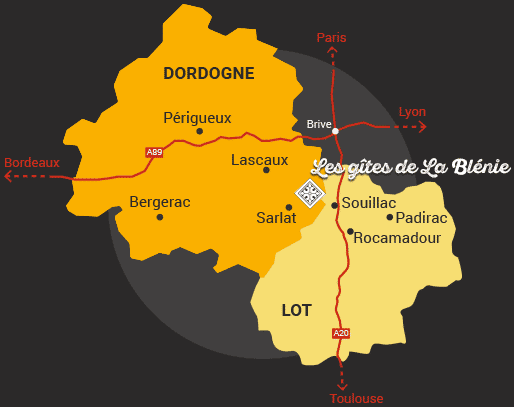

The earliest cluzeaux (artificial caves either above or below ground) can be found throughout the Dordogne. Concentrated in a few major sites are the vestiges of the Gallo-Roman period-–the gigantic ruined tower and arenas in Périgueux (formerly Vesone), the Périgord museum's archaeological collections, villa remains in Montcaret, and the Roman tower of La Rigale Castle in Villetoureix. The Petrocores took part in the resistance against Rome. The river Dordogne near Castelnaud-la-Chapelle The "Périgord Noir" (Black Périgord) surrounding the administrative center of Sarlat, overlooks the valleys of the Vézère and the Dordogne, where the woods of oak and pine give it its name.The "Périgord Pourpre" (Purple Périgord) with its capital of Bergerac, is a wine region.The "Périgord Blanc" (White Périgord), situated around the department's capital of Périgueux, is a region of limestone plateaux, wide valleys, and meadows.The "Périgord Vert" (Green Périgord), with its main town of Nontron, consists of verdant valleys in a region crossed by many rivers and streams.There are four Périgords in the Dordogne. The area eventually became known as the county of Le Périgord and its inhabitants became known as the Périgordins (or Périgourdins). The name for "four tribes" in the Gaulish language was "Petrocore". The county of Périgord dates back to when the area was inhabited by the Gauls. ( May 2013) ( Learn how and when to remove this template message) Unsourced material may be challenged and removed. Please help improve this article by adding citations to reliable sources in this section. This section needs additional citations for verification.


 0 kommentar(er)
0 kommentar(er)
